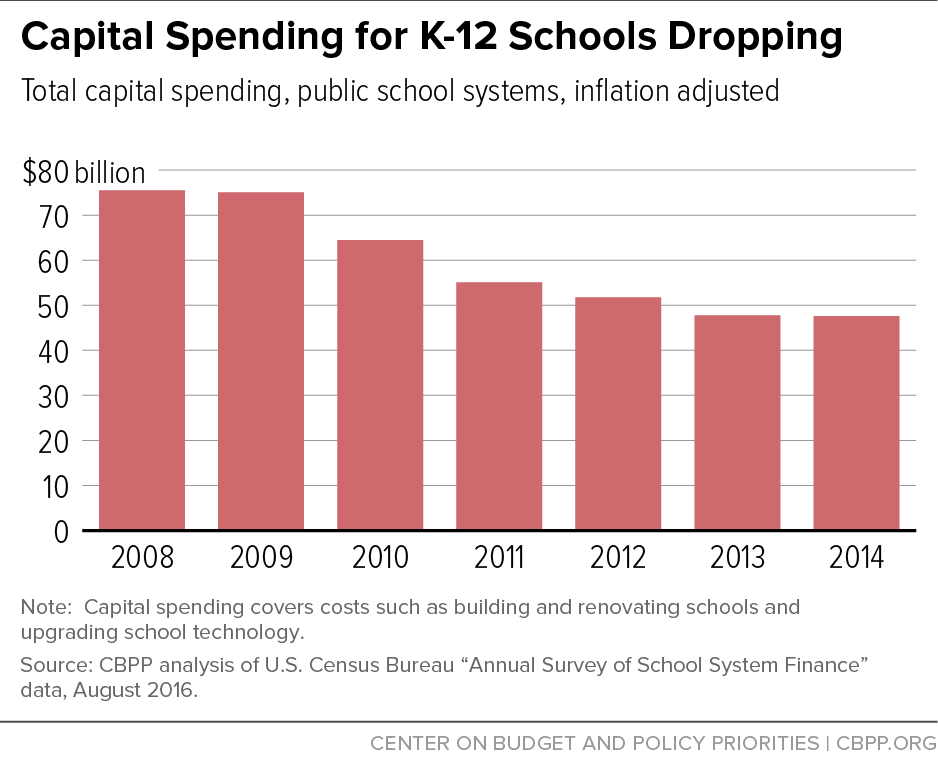BEYOND THE NUMBERS
State cuts in K-12 funding over the past decade, which we outline in our new report, haven’t just affected schools’ operating funding for things like teacher salaries and textbooks. Capital spending — to build new schools, renovate and expand facilities, and equip schools with more modern technologies, for example — also fell sharply in most states.
Elementary and secondary schools nationally cut capital spending by $28 billion or 37 percent between fiscal years 2008 and 2014 (the latest year available), after adjusting for inflation. (See graph.)
Forty states cut capital spending over this period — in many cases drastically, as the table below shows. Eight states cut capital spending by more than half. Nevada, the state with the sharpest reductions, cut capital spending by 86 percent.
| Change in Capital Spending on Schools, 2008-2014 Adjusted for Inflation |
|
|---|---|
| United States | -37% |
| Alabama | -35% |
| Alaska | -20% |
| Arizona | -61% |
| Arkansas | -17% |
| California | -41% |
| Colorado | -27% |
| Connecticut | -51% |
| Delaware | -35% |
| District of Columbia | 79% |
| Florida | -78% |
| Georgia | -45% |
| Hawaii | 67% |
| Idaho | -11% |
| Illinois | -29% |
| Indiana | -14% |
| Iowa | 8% |
| Kansas | 64% |
| Kentucky | -26% |
| Louisiana | -18% |
| Maine | -47% |
| Maryland | -24% |
| Massachusetts | 43% |
| Michigan | -43% |
| Minnesota | -14% |
| Mississippi | -24% |
| Missouri | -22% |
| Montana | -22% |
| Nebraska | -37% |
| Nevada | -86% |
| New Hampshire | -51% |
| New Jersey | -50% |
| New Mexico | -10% |
| New York | -23% |
| North Carolina | -68% |
| North Dakota | 147% |
| Ohio | -45% |
| Oklahoma | 36% |
| Oregon | -54% |
| Pennsylvania | -44% |
| Rhode Island | 23% |
| South Carolina | -33% |
| South Dakota | 16% |
| Tennessee | -32% |
| Texas | -36% |
| Utah | -52% |
| Vermont | -38% |
| Virginia | -38% |
| Washington | -23% |
| West Virginia | 4% |
| Wisconsin | 5% |
| Wyoming | -15% |

